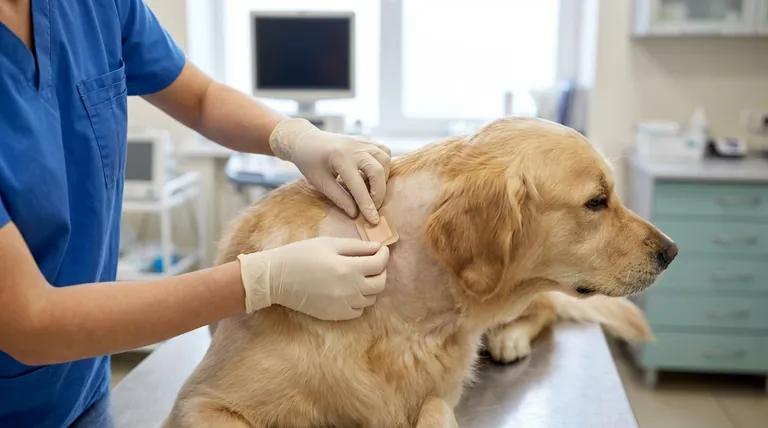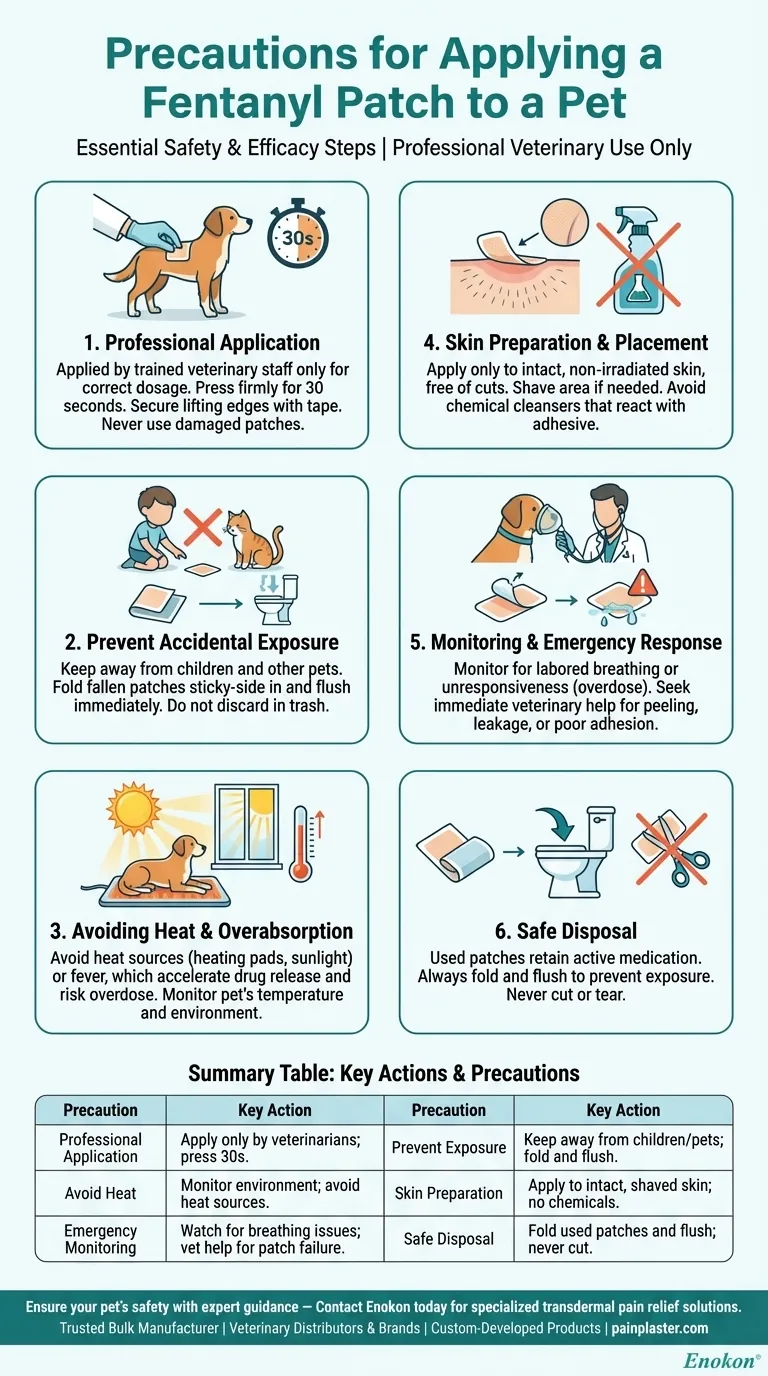Applying a dog fentanyl patch requires strict precautions to ensure safety and efficacy. Only trained veterinary professionals should handle application to avoid improper dosing or placement. Key risks include accidental exposure to humans or other pets, overheating (which increases absorption), and improper adhesion. Monitoring for adverse effects like breathing difficulties is critical, and damaged or loose patches must be disposed of safely (folded and flushed). Avoid application on damaged skin, and never cut patches. Immediate veterinary contact is needed if the pet shows abnormal reactions or patch failure.

Key Points Explained:
-
Professional Application
- Fentanyl patches must be applied by veterinarians or trained staff to ensure correct dosage and placement. Improper application can lead to underdosing, overdose, or skin irritation.
- The patch should be pressed firmly for 30 seconds to ensure adhesion. If edges lift, first-aid tape can secure them—never use damaged or cut patches.
-
Preventing Accidental Exposure
- Keep patches away from children and other pets, as contact can cause life-threatening overdose.
- If a patch falls off, fold it sticky-side in and flush it immediately—do not discard in trash where others might access it.
-
Avoiding Heat & Overabsorption
- Heat sources (e.g., heating pads, sunlight) or fever can accelerate drug release, risking overdose. Monitor the pet’s temperature and environment closely.
-
Skin Preparation & Placement
- Apply only to intact, non-irradiated skin free of cuts, burns, or irritation. Shave the area if needed, but avoid chemical cleansers that could react with the adhesive.
-
Monitoring & Emergency Response
- Normal effects include sedation; labored breathing or unresponsiveness signal overdose.
- Peeling, leakage, or poor adhesion requires immediate veterinary intervention.
-
Safe Disposal
- Used patches retain active medication. Always fold and flush to prevent accidental exposure—never cut or tear.
By adhering to these steps, you mitigate risks while ensuring therapeutic pain relief for the pet. Have you considered how environmental factors (like room temperature) might subtly affect patch performance? Such details underscore why veterinary oversight is non-negotiable for high-risk medications.
Summary Table:
| Precaution | Key Action |
|---|---|
| Professional Application | Apply only by trained veterinarians; press firmly for 30 seconds. |
| Prevent Exposure | Keep away from children/pets; fold and flush loose patches immediately. |
| Avoid Heat | Monitor pet’s environment to prevent overheating-induced overdose. |
| Skin Preparation | Apply to intact, shaved skin; avoid chemical cleansers. |
| Emergency Monitoring | Watch for labored breathing; seek vet help for peeling/leaking patches. |
| Safe Disposal | Fold used patches sticky-side in and flush—never cut or discard in trash. |
Ensure your pet’s safety with expert guidance — Contact Enokon today for specialized transdermal pain relief solutions. As a trusted bulk manufacturer of medical patches and plasters, we support veterinary distributors and brands with high-quality, custom-developed products. Let our technical expertise help you deliver safe, effective pain management for pets.
Visual Guide

Related Products
- Heat Relief Capsicum Patch for Lower Back Pain Relief
- Asthma Cough and Pain Relief Patch for Adults and Kids
- Far Infrared Deep Heat Relief Patches Medicated Pain Relief Patches
- Far Infrared Heat Pain Relief Patches Transdermal Patches
- Medical Cooling Gel Patches for Fever Cooling Patches
People Also Ask
- What should be done if a dose of the Capsicum HOT PATCH Adhesive Patch is missed? Follow These Steps for Safe Use
- What types of pain can the Deep Heat Pain Relief Back Patch be used for? Targeted Relief for Muscles & Joints
- How does the active ingredient Capsicum in the Heat Patch work? A Dual-Action Path to Pain Relief
- How does the Deep Heat Back Patch work? A Drug-Free Solution for Targeted Pain Relief
- What is the Capsicum HOT PATCH Adhesive Patch used for? Relieve Pain Naturally with Capsaicin
















